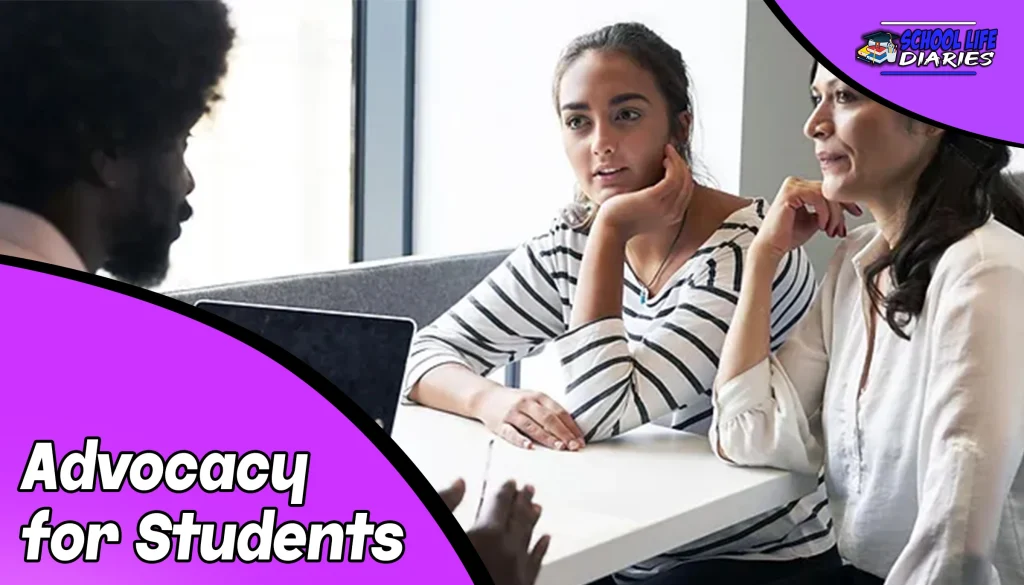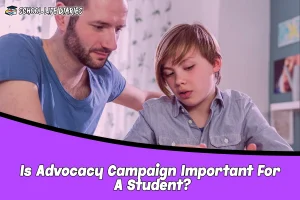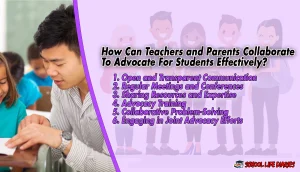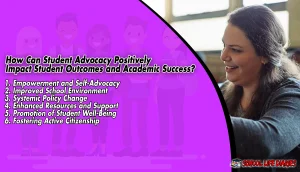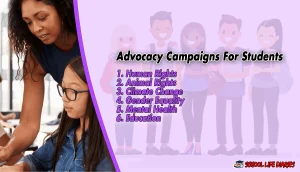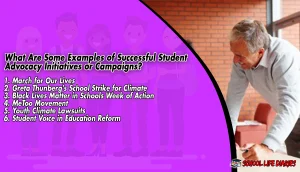Advocacy plays a crucial role in ensuring that students’ voices are heard and their needs are met. When students engage in advocacy campaigns, they have the opportunity to address issues that impact their education, well-being, and future.
This article will explore the concept of advocacy campaigns, their importance for students, what makes them successful, how teachers and parents can collaborate to advocate effectively, the positive impact of student advocacy on outcomes and academic success, and provide examples of successful student advocacy initiatives.
What Is An Advocacy Campaign?
An advocacy campaign refers to organized efforts aimed at promoting a particular cause or influencing policy decisions. In the context of students, advocacy campaigns are focused on addressing issues that directly affect their educational experiences, such as access to quality education, school safety, mental health support, and more. These campaigns typically involve raising awareness, mobilizing support, and working toward meaningful change.
Is Advocacy Campaign Important For A Student?
Yes, advocacy campaigns are incredibly important for students. They provide a platform for students to voice their concerns, share their experiences, and actively participate in shaping their educational environment.
By engaging in advocacy, students develop essential skills such as critical thinking, problem-solving, public speaking, and teamwork. It empowers them to become active contributors to their communities and fosters a sense of agency and responsibility.
What Makes An Advocacy Campaign Successful?
Several factors contribute to the success of an advocacy campaign:
1. Clear Goals:
A successful campaign starts with well-defined objectives. By setting clear goals, advocates can focus their efforts and measure progress effectively.
2. Research and Preparation:
Thorough research and preparation are key to understanding the issue at hand, identifying potential solutions, and building a compelling case for change.
3. Building Alliances:
Collaborating with like-minded individuals, organizations, and community members strengthens the advocacy campaign by amplifying the collective voice and pooling resources.
4. Effective Communication:
Communication strategies that utilize diverse channels, such as social media, traditional media, and direct engagement, help raise awareness and engage a broader audience.
5. Engagement and Mobilization:
Successful campaigns actively involve the target audience and provide avenues for supporters to take action, such as signing petitions, attending rallies, or contacting policymakers.
6. Persistence:
Advocacy campaigns often face challenges and setbacks. Persistence is crucial to maintaining momentum and pushing for change over an extended period.
How Can Teachers and Parents Collaborate To Advocate For Students Effectively?
Collaboration between teachers and parents is vital in advocating for students effectively. By working together, they can create a stronger support system and drive positive change. Here are some ways teachers and parents can collaborate:
1. Open and Transparent Communication:
Teachers and parents should establish open lines of communication to share information, concerns, and insights about students’ needs and challenges.
2. Regular Meetings and Conferences:
Conducting regular meetings and conferences allows teachers and parents to discuss individual student progress, address concerns, and identify opportunities for improvement.
3. Sharing Resources and Expertise:
Teachers can provide parents with resources and strategies to support their child’s learning at home, while parents can share their knowledge about the student’s strengths, interests, and unique needs.
4. Advocacy Training:
Teachers can educate parents about advocacy strategies and resources, empowering them to effectively navigate educational systems and advocate for their child’s rights.
5. Collaborative Problem-Solving:
When challenges arise, teachers and parents can work together to find creative solutions that benefit the student, such as implementing individualized education plans or seeking additional support services.
6. Engaging in Joint Advocacy Efforts:
Teachers and parents can join forces in advocacy campaigns at the school, district, or community level to address systemic issues that impact student well-being and academic success.
How Can Student Advocacy Positively Impact Student Outcomes and Academic Success?
Student advocacy has the potential to bring about significant positive changes in student outcomes and academic success. Here’s how:
1. Empowerment and Self-Advocacy:
Engaging in advocacy empowers students to become active participants in their educational journey. It helps them develop the skills, confidence, and knowledge to speak up for themselves and advocate for their needs.
2. Improved School Environment:
By addressing issues such as bullying, discrimination, or lack of resources, student advocacy campaigns contribute to creating a safer, more inclusive, and supportive school environment.
3. Systemic Policy Change:
Successful student advocacy campaigns can influence policy decisions at the school, district, or even national level, leading to systemic changes that benefit all students.
4. Enhanced Resources and Support:
Through advocacy efforts, students can advocate for increased resources, support services, and educational opportunities that directly impact their learning experience and academic success.
5. Promotion of Student Well-Being:
Advocacy campaigns focused on mental health, well-being, and access to appropriate support services contribute to a positive and holistic approach to education, promoting student well-being and resilience.
6. Fostering Active Citizenship:
Engaging in advocacy at an early age fosters a sense of civic responsibility and active citizenship, preparing students to become informed, engaged members of society.
Advocacy Campaigns For Students
Advocacy campaigns for students cover a broad range of issues. Here are some examples:
1. Human Rights:
Student-led campaigns advocating for human rights raise awareness about social justice, equality, and the protection of fundamental rights and freedoms.
2. Animal Rights:
Advocacy campaigns for animal rights focus on promoting compassion, responsible animal care, and ethical treatment of animals within educational institutions and beyond.
3. Climate Change:
Students advocating for climate change raise awareness about environmental issues, promote sustainable practices, and push for policies that address climate change.
4. Gender Equality:
Advocacy campaigns for gender equality strive to eliminate gender-based discrimination, empower marginalized genders, and promote equal opportunities in education and society.
5. Mental Health:
Student-led mental health advocacy campaigns aim to reduce stigma, promote mental well-being, and advocate for accessible and comprehensive mental health services in schools.
6. Education:
Advocacy campaigns for education focus on issues such as equitable access to quality education, adequate school funding, and inclusive educational practices that meet the diverse needs of students.
What Are Some Examples of Successful Student Advocacy Initiatives or Campaigns?
1. March for Our Lives:
Following the tragic shooting at Marjory Stoneman Douglas High School in Parkland, Florida, students organized the March for Our Lives movement to advocate for stricter gun control measures and safer schools.
2. Greta Thunberg’s School Strike for Climate:
Greta Thunberg, a Swedish student activist, gained global recognition for her school strike for climate change, inspiring students worldwide to take action against climate change.
3. Black Lives Matter in Schools Week of Action:
Students across the United States organized a week of action in support of the Black Lives Matter movement, advocating for racial justice, equity, and inclusive curricula.
4. MeToo Movement:
Although not exclusively student-led, the #MeToo movement brought to light the prevalence of sexual assault and harassment, initiating conversations and policy changes aimed at creating safer learning environments.
5. Youth Climate Lawsuits:
In various countries, young activists have taken legal action against governments and corporations for their contributions to climate change, demanding stronger environmental protections.
6. Student Voice in Education Reform:
Students have actively participated in shaping education policies and reforms by voicing their concerns, participating in decision-making processes, and advocating for student-centered approaches.
What Role Can Teachers and Parents Play in Student Advocacy?
Teachers and parents play crucial roles in supporting and fostering student advocacy. Here’s how they can contribute:
1. Guidance and Education:
Teachers and parents can educate students about their rights, responsibilities, and the importance of advocacy. They can explain how advocacy can lead to positive changes and empower students to speak up.
2. Encouragement:
Both teachers and parents should encourage students to express their opinions, ask questions, and voice concerns. Creating an open and non-judgmental environment is essential for students to feel comfortable advocating for themselves.
3. Active Listening:
Teachers and parents should actively listen to students when they express their needs, questions, or problems. This can involve listening to classroom concerns, homework challenges, or broader school-related issues.
4. Empowerment:
Teachers and parents should empower students to take the lead in advocating for themselves. This means providing guidance but also allowing students to drive the process. Encourage them to ask questions, seek clarification, and propose solutions.
5. Collaboration:
Teachers and parents can work together to support the student’s advocacy efforts. They can attend parent-teacher conferences, meetings with school administrators, or IEP (Individualized Education Program) meetings as needed. Collaborative efforts can be more effective in addressing students’ needs.
6. Advocating for Accessibility:
If a student requires special accommodations or support, teachers and parents can work together to ensure these needs are met. This might involve creating an IEP or a 504 plan or advocating for accessible resources in the classroom.
7. Teaching Problem-Solving:
Teachers and parents can teach students problem-solving skills, which are essential in effective advocacy. This includes helping students identify issues, gather information, and propose solutions.
8. Modeling Advocacy:
Adults can lead by example. Teachers can demonstrate advocating for better classroom resources or policies, while parents can advocate for their child’s educational needs. Seeing adults engage in advocacy can inspire students to do the same.
9. Feedback and Evaluation:
Teachers and parents can provide constructive feedback to students on their advocacy efforts. This helps students refine their skills and understand how to be more effective in the future.
FAQs:
Q: Why is student advocacy important?
A: Student advocacy is important because it empowers students to actively participate in shaping their educational environment, develop essential skills, and become agents of change.
Q: How can teachers support student advocacy?
A: Teachers can support student advocacy by fostering open communication, providing resources and guidance, facilitating opportunities for student engagement, and integrating advocacy-related topics into the curriculum.
Q: Can student advocacy make a difference?
A: Absolutely. Student advocacy has the potential to bring about significant changes in policies, systems, and outcomes, ultimately improving the educational experience for all students.
Q: How can parents get involved in student advocacy?
A: Parents can get involved in student advocacy by staying informed about educational issues, collaborating with teachers and other parents, joining parent-teacher associations, and participating in advocacy campaigns.
Q: What skills can students develop through advocacy?
A: Students can develop skills such as critical thinking, public speaking, research and analysis, teamwork, problem-solving, empathy, and leadership through advocacy.
Q: Can advocacy campaigns positively impact student well-being?
A: Yes, advocacy campaigns can positively impact student well-being by addressing issues such as mental health support, bullying prevention, inclusive policies, and creating a safe and supportive school environment.
Conclusion:
Student advocacy is a powerful force for change, allowing students to address issues that directly affect their education, well-being, and future. By engaging in advocacy campaigns, students develop valuable skills, promote positive change, and become active contributors to their communities.
Examples of successful student advocacy initiatives demonstrate the potential for transformative impact. By fostering collaboration between teachers, parents, and students, we can create a more inclusive and student-centered educational landscape.

